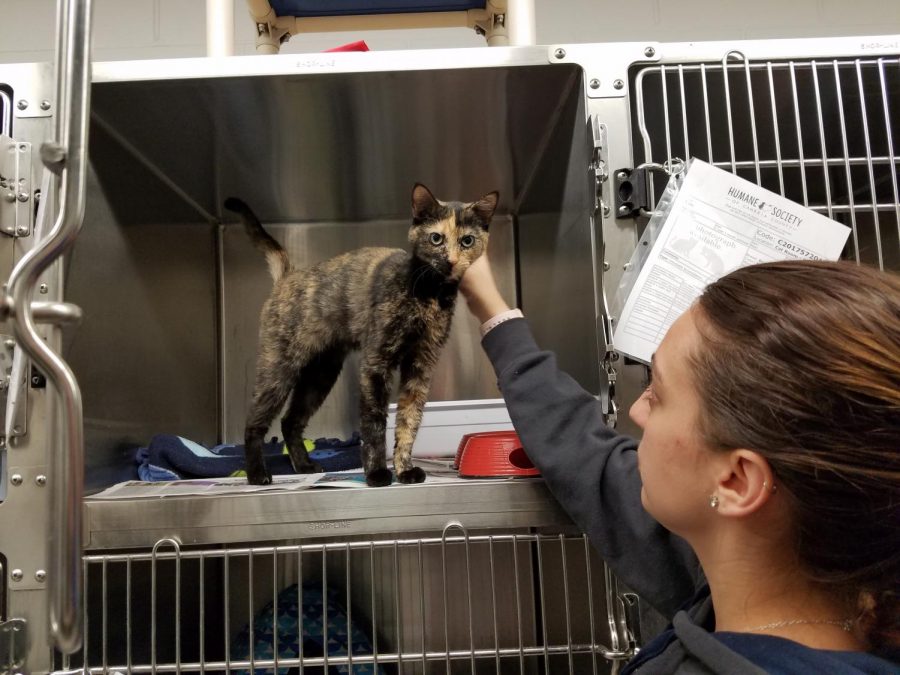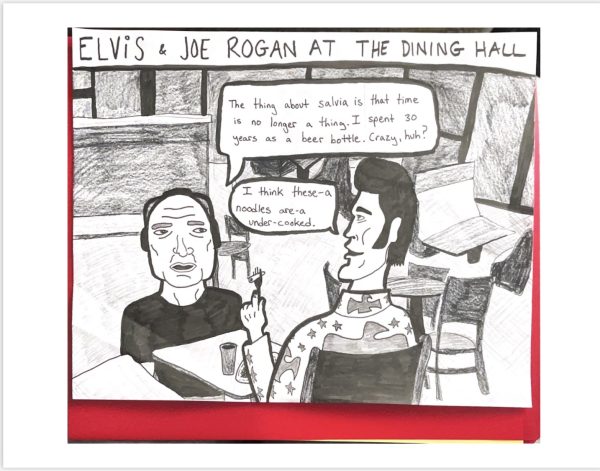Many more cool cats at the shelter
Cambria County Humane Society Executive Director Jessica Vamos accepted 50 cats last month, pushing the no-kill shelter to its limits. Vamos is petting Gemini, one of over 40 Coopersdale cats still awaiting adoption.
January 31, 2018
Meows come from all directions and little paws poke out between cage bars as one walks into the Cambria County Humane Society Cat Room.
Since its doors were opened in 1976, the shelter workers have accepted animals of all types and, starting last summer, it is a no-kill shelter. However, euthianization restrictions make overcrowding a possible problem at the shelter.
Unfortunately, humane society employees are facing that problem.
On Dec. 15, a city employee discovered 50 cats inside a home in Johnstown’s Coopersdale neighborhood after neighbors reported an odor coming from the house. The cats were living in poor conditions, and many were sick or malnourished.
Jessica Vamos, the shelter’s executive director, was given a short amount of time to prepare before the cats arrived.
“We were given a 24-hour warning before the cats came in,” said Vamos.
“Our biggest struggle was making sure we met the deadline of being ready when they came.”
The home the cats were found in was owned by a man in his 40s who did not interact with people well, so the cats had little contact with humans and did not receive much human affection, according to David Pundzak, cat room supervisor.
The building was condemned, Pundzak said.
The shelter, which usually holds 30 to 50 cats, was overwhelmed with almost 90.
“We were really only able to start getting up cages that morning (they came in).
“So we were scrambling to build cages and lay down newspaper, blankets and litter,” Vamos said.
Since being named a no-kill shelter, it means the animals require longer, more intensive care.
“Our vet bills are astronomical,” Vamos said, “We are mostly in need of monetary donations for our increase in vet bills.”
The shelter is also in need of physical donations.
“We go through around 200 pounds of cat litter every day,” Pundzak said.
Pundzak, who works with the cats daily, said he hopes to see more of the Coopersdale cats ready for adoption soon.
“Many of the cats that were found were violent at first because they were (not) used to people,” Pundzak said.
“But they have gotten so much better in their time with us. Several of the cats have already been adopted out.”
Alyssa Turcato of Windber and her husband adopted a kitten in early January from the shelter and said they both are overjoyed with their new companion.
“We decided to adopt a cat from the humane society rather than get one for free because we knew there were so many cats at the shelter that needed a home,” Turcato said.
“He was brought in with fleas and tapeworms but is healthy now after the humane society took amazing care of him.”
Vamos, who was named executive director less than two weeks before the new cats arrived, said she is overwhelmed with the support the shelter has been receiving from the community.
“The community has been doing a phenomenal job,” Vamos said. “They have really been supportive through this whole process.”
A majority of the Coopersdale cats are ready for adoption. Kittens that were born after their mothers were brought to the shelter are to be ready for adoption once they are eight weeks old.









